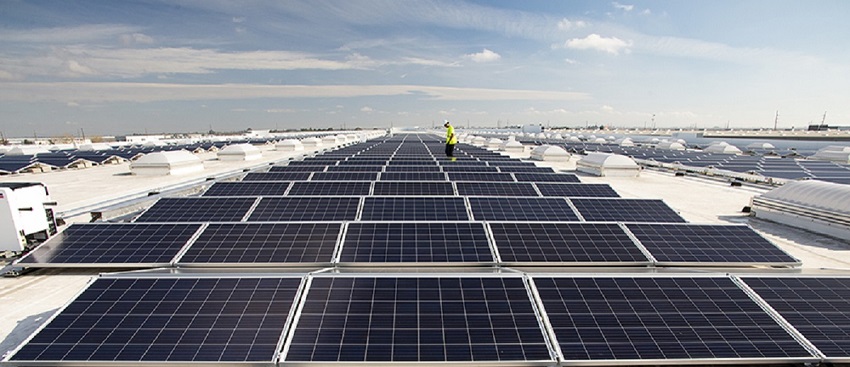The Basic Principles Of Residential Solar Panels Pa
The Basic Principles Of Residential Solar Panels Pa
Blog Article
Solar Tax Credit PA: Our Company Specializes In The Installation And Management Of Photovoltaic Energy Systems
History and Development of Photovoltaic Panel Business
The creation of solar panel business can be traced back to the 1800s when Alexandre Edmond Becquerel found the photovoltaic impact. Would he have thought of how his discovery would transform the way we harness energy?
Early Beginnings

In 1954, Bell Labs established the very first practical photovoltaic cell. This marked a considerable milestone in the history of solar energy. They were at first utilized to power area satellites, but who understood this was just the start?
Evolution and Growth
- In the 1970s, an energy crisis caused increased interest in renewable resource sources, including solar power.
- By the 1990s, developments in innovation and increasing environmental awareness resulted in the growth of solar panel business globally.
A New Period
As we got in the 21st century, the solar industry witnessed a rapid development. The need for clean and renewable resource brought about a brand-new age in the photovoltaic panel industry.
Interesting Facts
- The world's very first solar power station was constructed in 1982 in Hisperia, California.
- By 2019, solar energy had actually become the world's fastest-growing source of power.
Undoubtedly, the journey of solar panel companies has been impressive, hasn't it? The future holds tremendous potential, with constant advancements paving the way for a sustainable future. Can we envision a world powered entirely by solar power?
Moving Forward
Today, solar panel business continue to innovate, pursuing more efficient and economical solutions. The advancement of solar energy has come a long way, and yet, the journey has just started.
The Core of Photovoltaic Panel Production
Ever wonder what goes into creating those shiny, sun-loving solar panels? The process is as outstanding as the end product (Affordable Solar Panels PA). High-purity silicon, the main component in photovoltaic panels, undergoes numerous transformations to ensure its effectiveness and durability
From Sand to Silicon
Crystalline silicon, the foundation of many photovoltaic panels, originates from easy sand. It's a fascinating journey, isn't it? The sand goes through a high-temperature response with carbon to form silicon. This isn't simply any silicon. The silicon utilized in photovoltaic panels is "solar-grade," with a pureness of 99.9999%. It's this purity that makes it possible for the panels to efficiently transform sunlight into power.
Ingot Formation
Once the silicon is pure enough, it's time to form ingots. Photo a large, cylindrical block of strong silicon. How is this achieved? Through a process called Czochralski process, where the silicon is melted and after that gradually recrystallized. It's a sluggish dance of science, resulting in a solid item that is almost as pure as the raw silicon itself.
Slicing into Wafers
The ingots are then sliced into wafer-thin pieces, like slicing a loaf of bread. Each piece is a possible solar battery, waiting to harness the power of the sun. Did you understand that the silicon wafers are only about 200 micrometers thick? That has to do with half the thickness of a human hair! The process requires accuracy and perseverance, however the result is a set of wafers prepared to be developed into solar here batteries.
Developing Solar Cells
With the wafer all set, it's time for the magic to occur. The silicon wafer is 'doped' with other elements like phosphorous and boron to develop an internal electrical field. It's this field that allows the conversion of sunlight into electrical energy. Complex, isn't it?
Assembly and Quality Control
Solar cells resemble puzzle pieces that come together to form a photovoltaic panel. The cells are soldered together in a grid-like pattern, then covered with a protective layer of glass. The last step involves strenuous quality control checks. It's essential that every solar panel carries out at its peak, wouldn't you concur?
Expert Pointer
Constantly keep in mind that even the most efficiently produced photovoltaic panel can lose effectiveness due to dirt and particles accumulation. Routine cleaning can considerably improve your panels' efficiency.
Comprehending the Environmental Impact of Photovoltaic Panel Companies
Ever pondered the environmental footprint of a solar panel company? Green innovation, such as solar, has changed our energy landscape, but what about the behind-the-scenes impact?
The Production Process: A Double-Edged Sword
The production procedure for photovoltaic panels requires a significant quantity of energy. This process, called 'em bodied energy', can be seen as a form of 'energy financial obligation'. It's a little like borrowing today's sunlight to power tomorrow's energy needs. But fret not, the energy repayment time is often shorter than you 'd believe!
- The energy repayment period for photovoltaic panels is generally 1-4 years.
- After this period, the energy produced is basically carbon-free.

Life After Decommission
And what happens when a solar panel reaches the end of its lifespan? Can it simply be tossed into the garbage? No, that would not be really green, now, would it?
A feasible solution is recycling. While photovoltaic panel recycling is still in its infancy, it holds a world of capacity. Recycling not only keeps products out of garbage dumps but likewise decreases the need for brand-new raw materials.
Accountable Sourcing: More Than A Buzzword
Where does the silicon come from, you ask? The industry's demand for silicon and unusual minerals can lead to damaging mining practices. Responsible sourcing is therefore imperative to decrease hazardous environmental impacts.
Reduced Carbon Emissions: The Larger Photo
Let's not forget the bigger photo: solar energy significantly lowers carbon emissions. When installed, photovoltaic panels produce tidy, renewable resource, offsetting their initial production footprint.
In other copyright, the environmental effect of photovoltaic panel companies is a complicated problem. Nevertheless, with responsible practices, the promise of a cleaner, greener future is well within our grasp.

Financial Performance and Market Share of Photovoltaic Panel Companies
Ever questioned why some photovoltaic panel companies - Solar Installers Pennsylvania beat others in the market? What sets them apart? The key depend on their monetary performance and market share
Financial Performance: A Crucial Indication
Financial performance plays a pivotal function in the success of any service. For photovoltaic panel business, it's no different. Strong monetary performance makes it possible for these business to buy cutting-edge technology, research study, and advancement, therefore creating high-quality, effective solar panels.
But how do they achieve this? With a focus on expense effectiveness and strategic financial investments. Companies that manage to minimize production expenses without jeopardizing on quality tend to fare much better in the market.
Market Share: A Step of Success
Market share, on the other hand, is a direct reflection of a business's popularity amongst customers. A high market share suggests more house owners are picking their solar panels over rivals.
So, what's the secret recipe for gaining a bigger market share? It boils down to client complete satisfaction and brand track record. Business that focus on client requirements and keep a positive brand name image are most likely to record a larger share of the marketplace.
- Client Complete satisfaction: Solar panel companies that deliver reliable products and remarkable customer service tend to have higher customer satisfaction rates.
- Brand Reputation: A strong brand reputation is developed in time through constant delivery of quality services and products.
Financial Efficiency and Market Share: The Symbiotic Relationship
Interestingly, the relationship between financial performance and market share is not one-sided. They feed off each other. A strong monetary efficiency can increase a company's market share, while a high market share can improve financial efficiency.
As a solar panel company, stabilizing these two aspects is essential for long-lasting success. A company that neglects either of them might discover it challenging to preserve its position in the competitive solar market.
The Takeaway
So, what does all this mean for you? Whether you're a property owner seeking to install solar panels or a financier eyeing the solar market, understanding the financial efficiency and market share of photovoltaic panel companies is essential. They are essential indications of a company's health and potential for future development.
Report this page